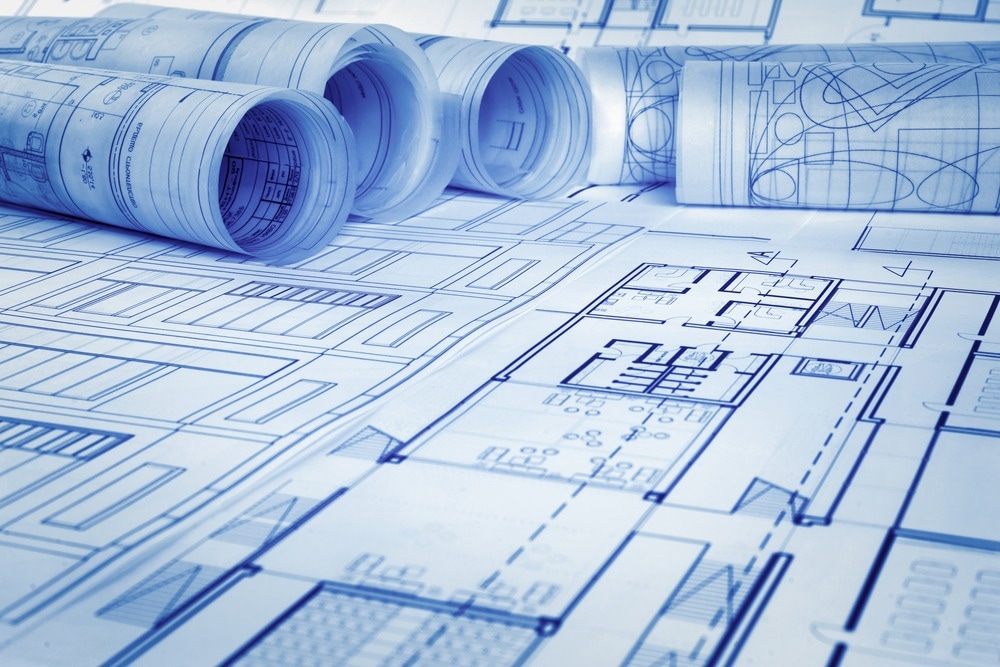Artificial Intelligence (AI) is emerging to be a transformative force across various industries. One such application is the use of artificial intelligence in construction.

Image Credit: DimiSotirov/Shutterstock.com
By utilizing artificial intelligence in construction, companies are enhancing efficiency, improving safety, and revolutionizing project management. Here, we will explore the remarkable potential and application of artificial intelligence in construction through case studies, as well as envision the future of artificial intelligence in construction and its impact.
Artificial Intelligence in Construction: Intelligent Construction Planning
In the realm of construction planning, artificial intelligence in construction is evident and proving to be an invaluable tool. Commercially, a notable example of artificial intelligence in construction is the implementation of AI-powered project management systems, such as ALICE Technologies, by a leading construction firm, Parsons.
In Canada, the City of Edmonton intends to expand its public transport network by constructing the Valley Line West light rail extension. With the project valued at $2.6 Billion, it encompasses an 8.7-mile rail extension with multiple street-leveled and elevated stations.
Using artificial intelligence in construction, Parsons gained the ability to delve into scheduling options that considered multiple influential factors, including challenges associated with winter weather conditions.
Accurate timing was crucial to prevent possible liquidated damages due to delayed delivery. Moreover, ALICE enabled Parsons to generate schedules that necessitated fewer crews and reduced equipment usage, such as concrete pumps.
With ALICE, Parsons successfully applied artificial intelligence in construction and crafted a highly competitive bid that instilled a strong sense of confidence within the company. As a result, Parsons emerged as the chosen contractor, where construction commenced in 2021, with completion expected by 2027.
Artificial Intelligence in Construction: Construction Robotics
Another commercial example of artificial intelligence in construction is the use of construction robotics. Companies like Built Robotics have developed AI-powered construction equipment, utilizing AI algorithms and computer vision technology to navigate construction sites, perform tasks, and execute decisions in real time.
Within artificial intelligence in construction, construction robotics aim to improve efficiency, productivity, and safety on construction sites. By leveraging AI, these machines work autonomously, reducing the need for manual labor and increasing productivity, optimizing construction workflows, minimizing errors, and enhancing safety by avoiding potential hazards.
Built Robotics demonstrated implementing artificial intelligence in construction by successfully operating the first autonomous piling machine, the Built Robotics RPD 35, which creates the structural foundations for solar panels, revolutionizing the efficiency and speed of solar farm construction by consequentially increasing productivity via the acceleration of construction tasks and reducing labor-intensive work, completing projects five times faster than conventional approaches - such is the power of using artificial intelligence in construction.
Artificial Intelligence in Construction: AI-Based Structural Health Monitoring
In structural health monitoring, we see further research on artificial intelligence in construction. Researchers have developed AI-based systems to assess the condition of infrastructure, for example, bridges and buildings. These systems incorporate sensors, machine learning algorithms, and AI models to continuously monitor structural behavior, detect anomalies, and predict potential failures.
The application of artificial intelligence in construction enables near real-time analysis of data collected from sensors, allowing for proactive maintenance and addressing structural issues to prevent continued deterioration, thus enhancing the safety, reliability, and longevity of infrastructure.
Implementing artificial intelligence in construction, such as AI-based structural health monitoring, offers significant benefits to the construction industry; improving safety by detecting structural issues early on; preventing catastrophic failures; and ensuring the integrity of infrastructure.
Artificial Intelligence in Construction: The Future
Looking ahead, the future of artificial intelligence in construction holds immense promise. One exciting area of focus is the integration of AI with robotic systems that are more advanced than the robot examples mentioned above, enabling autonomous construction processes that are more complex.
Such developments could include the use of AI-powered robots for more intricate tasks such as bricklaying, concrete pouring, and material handling, thereby enhancing productivity and reducing labor-intensive work.
With the construction robots market reported to have a compound annual growth rate of 14%, it is projected to expand significantly, tripling in size, by 2030 – exemplifying the appetite for artificial intelligence in construction.
Furthermore, the advancing scope of artificial intelligence in construction includes AI-driven digital twins, creating virtual replicas of physical assets. These digital twins, powered by AI algorithms, will allow construction companies to simulate, monitor, and optimize construction processes in a virtual environment, thus resulting in the minimization of errors, improving collaboration, and optimizing the utilization of resources.
In addition, during times of crisis, such as natural disasters or unforeseen events, artificial intelligence in construction is valuable, where AI-driven digital twins are able to assist in planning for post-crisis reconstruction efforts.
It is clear that artificial intelligence in construction will enhance the industry, playing a part in the ever-expanding AI revolution.
References and Further Reading
Edmonton LRT: Making history in Canada with ALICE [Online]. ALICE Technologies. Available at: https://blog.alicetechnologies.com/case-studies/parsons-edmonton-lrt
Built Robotics develops the 1st fully autonomous solar piling system. [Online]. Equipment Journal. Available at: https://www.equipmentjournal.com/tech-news/built-robotics-develops-the-1st-fully-autonomous-solar-piling-system/
Malekloo A, Ozer E, AlHamaydeh M, Girolami M. (2022) Machine learning and structural health monitoring overview with emerging technology and high-dimensional data source highlights. Structural Health Monitoring, 21(4), pp. 1906-1955. https://journals.sagepub.com/doi/10.1177/14759217211036880
Urbanization is driving new demand for construction robots. [Online]. ZDNet. Available at: https://www.zdnet.com/article/urbanization-is-driving-new-demand-for-construction-robots/
Lv Z, Xie S. (2022) Artificial intelligence in the digital twins: State of the art, challenges, and future research topics [version 2; peer review: 2 approved]. Digital Twin. 1(12). https://digitaltwin1.org/articles/1-12/v1
Waheeb R. Using Digital Twin Technology to Improve Projects Management [Online]. SSRN-Elsevier. Available at: https://papers.ssrn.com/sol3/papers.cfm?abstract_id=4255641
Disclaimer: The views expressed here are those of the author expressed in their private capacity and do not necessarily represent the views of AZoM.com Limited T/A AZoNetwork the owner and operator of this website. This disclaimer forms part of the Terms and conditions of use of this website.